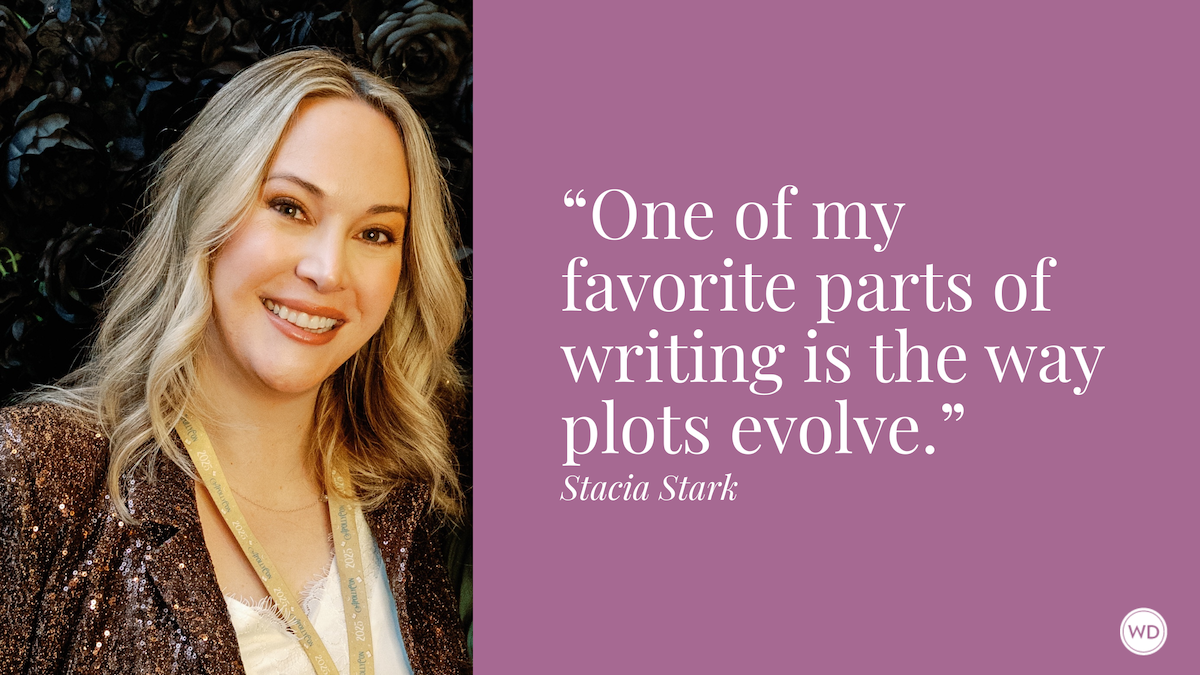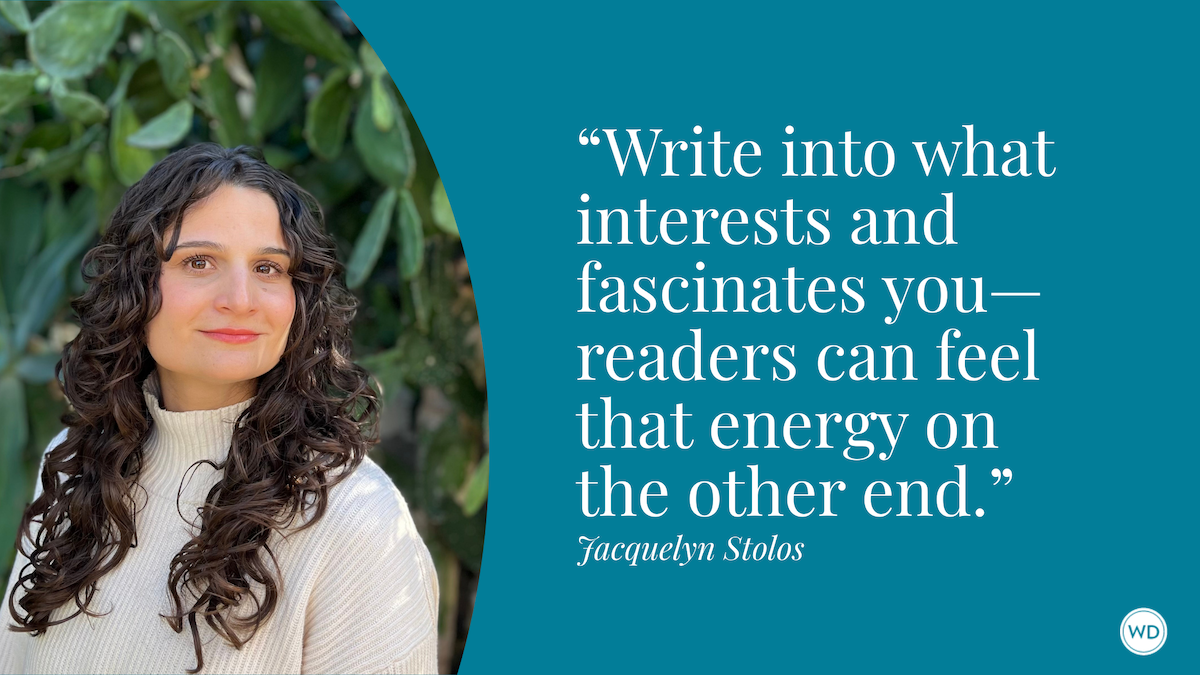Read, Then Write: Books To Study To Help Your Stories
Content editor Michael Woodson shares books across various genres to read that can help you in your writing process.
I believe that best writers are readers first. Over and over again authors I interview mention other books that either helped them understand how to write their own books, inspired the plot for their books, or were even used as an homage to the story. There are endless ways that reading can help us navigate our own storytelling, and often, reading helps unlock some faraway creative thought in my brain that I wouldn’t have found on my own.
Over the years of reading, several books stand out to me for something they taught me about writing, and I find myself reaching for them while I work on my own drafts. Here are five books to read to help you with different aspect of your writing.
For Unique Descriptions: Fates and Furies by Lauren Groff
Synopsis: Every story has two sides. Every relationship has two perspectives. And sometimes, it turns out, the key to a great marriage is not its truths but its secrets. At the core of this rich, expansive, layered novel, Lauren Groff presents the story of one such marriage over the course of twenty-four years.At age twenty-two, Lotto and Mathilde are tall, glamorous, madly in love, and destined for greatness. A decade later, their marriage is still the envy of their friends, but with an electric thrill we understand that things are even more complicated and remarkable than they have seemed.
Why It Helps: Fates and Furies is the kind of book that makes you look at the world differently when you finish reading it. Groff’s ability to uniquely describe the tangible world made me start to try harder at helping my readers see and feel what my characters were seeing and feeling. If you’re feeling like your characters are well-rounded and your plot is sound but worry the world you’ve set them in is falling a little flat, Fates and Furies will help guide you to observe things in new ways and to put words to feelings you didn’t have before.
For Perfecting Pacing: An American Marriage by Tayari Jones
Synopsis: Newlyweds Celestial and Roy are the embodiment of both the American Dream and the New South. He is a young executive, and she is an artist on the brink of an exciting career. But as they settle into the routine of their life together, they are ripped apart by circumstances neither could have imagined. Roy is arrested and sentenced to twelve years for a crime Celestial knows he didn't commit. Though fiercely independent, Celestial finds herself bereft and unmoored, taking comfort in Andre, her childhood friend, and best man at their wedding. As Roy's time in prison passes, she is unable to hold on to the love that has been her center. After five years, Roy's conviction is suddenly overturned, and he returns to Atlanta ready to resume their life together.
Why It Helps: Tayari Jones expertly navigates the heartbreak of time passing while facing an injustice, and how time can act as both a hero and a villain to our stories. I personally struggle with passages of time in my own writing—I’m never sure how long to stay in a moment, or when to jump ahead in time and if I’ve given enough information to the readers for the time jump to happen without being discombobulating. An American Marriage shows how to maintain a single moment for pages upon pages, while also passing several years in few words.
For Incorporating Different Timelines: Sea of Tranquility by Emily St. John Mandel
Synopsis: Edwin St. Andrew is eighteen years old when he crosses the Atlantic by steamship, exiled from polite society following an ill-conceived diatribe at a dinner party. He enters the forest, spellbound by the beauty of the Canadian wilderness, and suddenly hears the notes of a violin echoing in an airship terminal—an experience that shocks him to his core. Two centuries later a famous writer named Olive Llewellyn is on a book tour. She's traveling all over Earth, but her home is the second moon colony, a place of white stone, spired towers, and artificial beauty. Within the text of Olive's best-selling pandemic novel lies a strange passage: a man plays his violin for change in the echoing corridor of an airship terminal as the trees of a forest rise around him. When Gaspery-Jacques Roberts, a detective in the black-skied Night City, is hired to investigate an anomaly in the North American wilderness, he uncovers a series of lives upended: The exiled son of an earl driven to madness, a writer trapped far from home as a pandemic ravages Earth, and a childhood friend from the Night City who, like Gaspery himself, has glimpsed the chance to do something extraordinary that will disrupt the timeline of the universe.
Why It Helps: Multiverses and various timelines are having a moment in pop culture, but their ability to make our stories interesting and exciting is, well, timeless. I, personally, feel very intimidated by the prospect of incorporating different timelines in my stories, but Sea of Tranquility shows how writing in the past, the present, and the future, and having those timelines intersect can be done by incorporating different senses for characters to experience. Timelines don’t have to be overly complicated or particularly confusing to be effective, nor does the science of time travel have to be understood by an elite few, though I’ll say no more so as not to spoil the novel.
For Maintaining Tone: Dr. No by Percival Everett
Synopsis: The protagonist of Percival Everett's puckish new novel is a brilliant professor of mathematics who goes by Wala Kitu. (Wala, he explains, means "nothing" in Tagalog, and Kitu is Swahili for "nothing.") He is an expert on nothing. That is to say, he is an expert, and his area of study is nothing, and he does nothing about it. This makes him the perfect partner for the aspiring villain John Sill, who wants to break into Fort Knox to steal, well, not gold bars but a shoebox containing nothing. Once he controls nothing he'll proceed with a dastardly plan to turn a Massachusetts town into nothing. Or so he thinks.With the help of the brainy and brainwashed astrophysicist-turned-henchwoman Eigen Vector, our professor tries to foil the villain while remaining in his employ. In the process, Wala Kitu learns that Sill's desire to become a literal Bond villain originated in some real all-American villainy related to the murder of Martin Luther King Jr. As Sill says, "Professor, think of it this way. This country has never given anything to us and it never will. We have given everything to it. I think it's time we gave nothing back."
Why It Helps: Percival Everett understands tone better than possibly any writer working today. His novels are often satirical in nature and dry in execution, and he’s able to maintain those two things from the first page to the end. If tone is important to you in the world-building of your story, then read Dr. No, or frankly, any of Everett’s many books.
For Combining Genres: Cloud Cuckoo Land by Anthony Doerr
Synopsis: In the 15th century, an orphan named Anna lives inside the formidable walls of Constantinople. She learns to read, and in this ancient city, famous for its libraries, she finds what might be the last copy of a centuries-old book, the story of Aethon, who longs to be turned into a bird so that he can fly to a utopian paradise in the sky. Outside the walls is Omeir, a village boy, conscripted with his beloved oxen into the army that will lay siege to the city. His path and Anna's will cross. In the present day, in a library in Idaho, octogenarian Zeno rehearses children in a play adaptation of Aethon's story, preserved against all odds through centuries. Tucked among the library shelves is a bomb, planted by a troubled, idealistic teenager, Seymour. This is another siege. And in a not-so-distant future, on the interstellar ship Argos, Konstance is alone in a vault, copying on scraps of sacking the story of Aethon, told to her by her father.Anna, Omeir, Seymour, Zeno, and Konstance are dreamers and outsiders whose lives are gloriously intertwined.
Why It Helps: You could describe Cloud Cuckoo Land as historical fiction and you’d be correct. You could also call it literary fiction or contemporary fiction, and you could call it futuristic science-fiction, and you could call it dystopian fiction, and all of that would still apply. Cloud Cuckoo Land is my favorite kind of novel because it illustrates that you don’t need to write in one lane to write successful stories. Combining genres often results in fresh ideas we haven’t read before.
Michael Woodson is the content editor at Writer's Digest. Prior to joining the WD team, Michael was the editorial and marketing manager for the independent children's book publisher Blue Manatee Press. He was also the associate editor for Artists Magazine and Drawing magazine, and has written for Soapbox Cincinnati, Watercolor Artist, and VMSD magazine. An avid reader, Michael is particularly interested literary fiction and magical realism, as well as classics from Jane Austen, Ernest Hemingway, and E.M. Forster. When he's not reading, he's working on his own stories, going for a run at his favorite park, or cuddling up to watch a movie with his husband Josh and their dog Taran.









